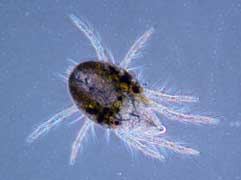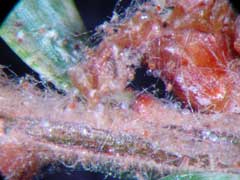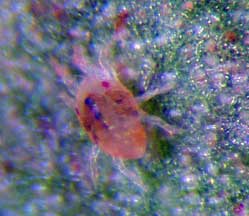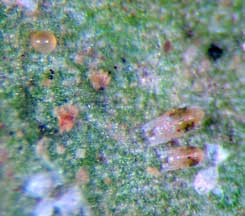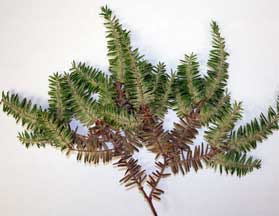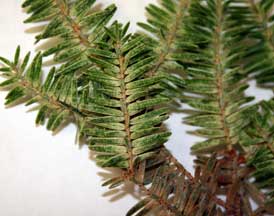Spider mites benefiting from our hot dry weather
Editor’s note: This article is from the archives of the MSU Crop Advisory Team
Alerts. Check the label of any pesticide referenced to ensure your use is
included.
We
are getting lots of plant samples that show very high numbers of spider
mites and severe spider mite feeding injury. We’ve seen spider mite
injury on Viburnum, Astilbe, Rose, Amelanchier, Burning bush, soybeans,
spruce and hemlock in the last week alone. Some samples have shown the
beginning stages of injury while others show advanced stages where there
is very little green tissue left on the leaves.
Spider mites have piercing/sucking mouthparts. To feed they abrade or
poke the leaf surface with their pointed mouthparts and then suck up the
liquid that oozes from these wounds. The affected tissue more or less
dries up and the result is a yellowish stippling of the leaf or needle
surface. As the feeding injury progresses, the stippled areas coalesce
and the entire leaf turns a brownish color. This is often referred to as
“bronzing.” This yellowing and bronzing may appear similar to other
damage symptoms like drought or a nutrient deficiency, so it is always a
good idea to look for evidence of the mites, which will include the
mites themselves, cast skins, clear spent egg shells and viable eggs.
Our own Jan Byrne proudly holds the lab record for the most severe case
of spider mite injury on a broadleaf ornamental.
Spider mites are among the most common and destructive of all plant
pests, especially during summers that are particularly hot and dry, like
the one we are having this year. Some species are very specific and
feed on only one type of host plant. Others, like the twospotted spider
mite, seem to be able to feed on many plant species including weeds,
vegetables, flowers, field and forage crops, brambles and other small
fruits, tree fruits, greenhouse plants, and certain trees and shrubs.
Spider mites feed and reproduce whenever conditions are favorable for
plant growth, from early spring until late fall. Most spider mites
prefer new growth. Hot weather favors rapid development and
reproduction. The twospotted spider mite, for example, can go from an
egg to an adult in only five days at 75ºF. The female lives two to four
weeks and produces about 100-300 eggs.
Most of the time spider mite populations are kept in check by natural
enemies and do not require pesticides. Occasionally, during favorable
conditions that produce damaging mite populations, a miticide
application may be warranted to protect the host plant from serious
injury. Because of their rapid development and reproductive potential,
repeated treatments at 10-day intervals may be required for some plants
to bring about satisfactory control.



 Print
Print Email
Email